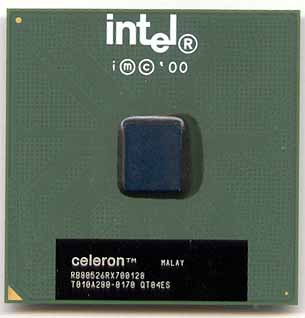Celeron 700 Specifications
· 0.18-micron Coppermine128 core
· 700MHz clock speed – 10.5x clock multiplier
· 32KB on-die L1 cache running at core speed
· 256-bit Advanced Transfer Cache – 4-way set associative 128KB on-die L2 cache running at core speed
· Advanced System Buffering
· 370-pin FC-PGA Socket-370 GTL+ CPU interface running at 66MHz
· 1.65v core voltage
The Celeron 700 is really no different from the 566/600MHz parts that have been on the streets for a while now. It is still based on the same 0.18-micron Coppermine128 core, features the same amount of L1 cache (16KB Instruction + 16KB Data cache) and the same 128KB inclusive L2 cache.

The only major difference is that Intel increased the core voltage of the Celeron by 10%, from 1.50v of the 533 – 600MHz parts to 1.65v, which happens to be the core voltage of most of the Pentium IIIs as well.
Most overclockers are also familiar with this practice. If your CPU isn’t completely stable at a higher clock speed simply give the core voltage a little boost to see if things get better. Since 1.65v is still within the range of tolerance for the Celeron it seemed easiest for Intel to just increase the core voltage of the CPU in order to hit 700MHz instead of having to introduce a new core stepping to achieve the same effect.
The downside to this is that if you’re interested in overclocking the new Celeron 700 you’re not going to have as pleasant of an experience as you might have had with the 1.50v variants such as the 566MHz and 600MHz parts since the CPU is already running at a much higher core voltage.










0 Comments
View All Comments